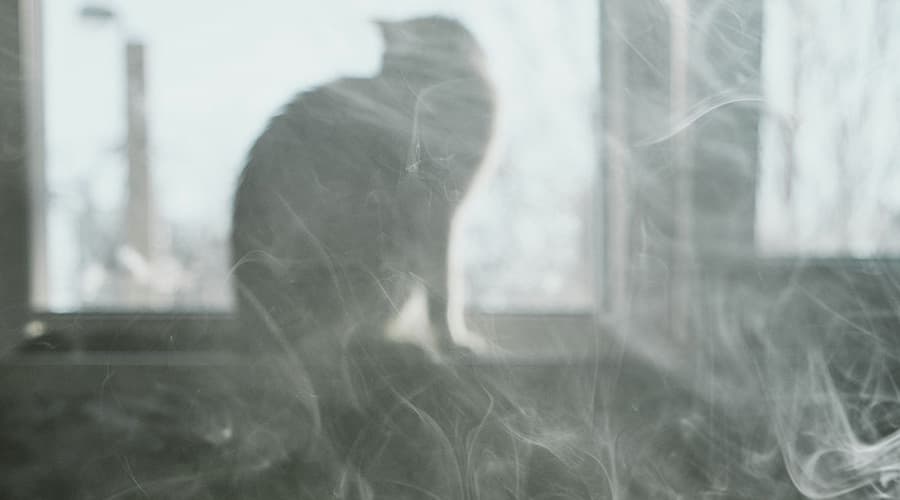Every pet keeper and vape lover has asked themselves this question at least once: Would vaping in the house affect my pet? Animals are naturally curious. The second you turn away, they might already be poking their nose into your e-juice stash. So, is it indeed harmful to them?
Liquids are the main danger
The biggest threat to pets when it comes to vaping doesn’t come from the vapor or the device itself—it’s the e-liquids. Many of them contain nicotine, which is toxic to animals. The level of toxicity depends on the animal’s size, meaning that smaller pets require a much smaller dose to become poisoned.
Nicotine poisoning can be extremely dangerous. Symptoms in pets include vomiting, drooling, shaking, increased heart rate, weakness, and in extreme cases, seizures or even death. That’s why it’s crucial to store your e-liquids in a safe place, well out of reach.
In most cases, nicotine is the real concern. Flavours, though sometimes irritating, are usually not harmful. Ingredients like propylene glycol (PG) and vegetable glycerin (VG) are even found in some pet foods, though in very small and controlled quantities. But remember—what’s safe in a specific dose in food may not be safe when inhaled or ingested in another form.
The most important tip: keep your e-liquids tightly closed and stored away. If you regularly refill your vape tank, don’t get lazy—tighten the cap. Dogs, in particular, are drawn to unfamiliar smells, and a leaky bottle might be just intriguing enough for them to investigate. Cats tend to be more cautious, but accidents can still happen.
Second-hand vaping
Once you’ve ruled out ingestion of the liquid, the next question is about second-hand vapor. Can the vapor itself harm your pets?
According to a study by the California Department of Public Health, air samples taken from a vape shop filled with vapor showed very low levels of harmful chemicals. This is somewhat reassuring, but it’s still no reason to relax completely. Just because the exposure is low doesn’t mean it’s non-existent—especially for animals with more sensitive respiratory systems.
For safety, avoid blowing vapor directly near or onto your pets. Cats and dogs might not complain, but their lungs aren’t built to handle those aerosols. Always vape in a well-ventilated room, and consider opening a window or turning on a fan when vaping indoors.
PG and cats
A special note should be made about propylene glycol (PG) and cats. Although PG is commonly used in food, studies have shown that cats are particularly sensitive to it. Ingesting too much PG can lead to Heinz body anemia, a condition that affects red blood cells.
The good news is that the toxic dose is relatively high—about 1.6 grams per kilogram of body weight. That’s more than your vape tank would typically hold. Still, consistent, long-term exposure, even at lower levels, might cause health problems. It’s better to play it safe and limit your cat’s exposure as much as possible.
Vapes in Brazil
In 2014, Brazil took a strict stance on vaping by banning the advertising and sale of e-cigarettes. Authorities stated that vaping products hadn’t been studied thoroughly and might pose significant health risks. As a result, they are considered tobacco products, and their use is banned in public spaces.
This regulation has indirect benefits for pets too. By limiting the availability of flavored e-liquids and discouraging vaping, Brazil is helping reduce the chances of accidental pet exposure to harmful chemicals. Nicotine, again, is the major concern—it can severely affect pets even in small doses.
Some people still manage to buy vapes in Brazil through alternative means, but the selection is often limited. Be prepared to use non-flavored e-liquids or go without altogether. If you’re a pet lover, this might even be a good opportunity to rethink the habit altogether. Quitting vaping or smoking not only benefits your health but can make your home a much safer space for your animals.
Final thoughts
So, does vaping at home affect your pet? Yes, potentially, especially if you’re careless with where and how you store your vape gear. The vapor itself isn’t highly toxic, but e-liquids—particularly those with nicotine—are dangerous if ingested. Keep your bottles tightly closed and out of reach, avoid vaping directly near your pets, and make sure the room is well-ventilated.
If you ever suspect that your pet has ingested vape juice or is acting strangely after exposure to vapor, contact a vet immediately. Quick action can save a life.
After all, our pets rely on us for their safety. A few small precautions can go a long way in keeping them healthy and happy.
